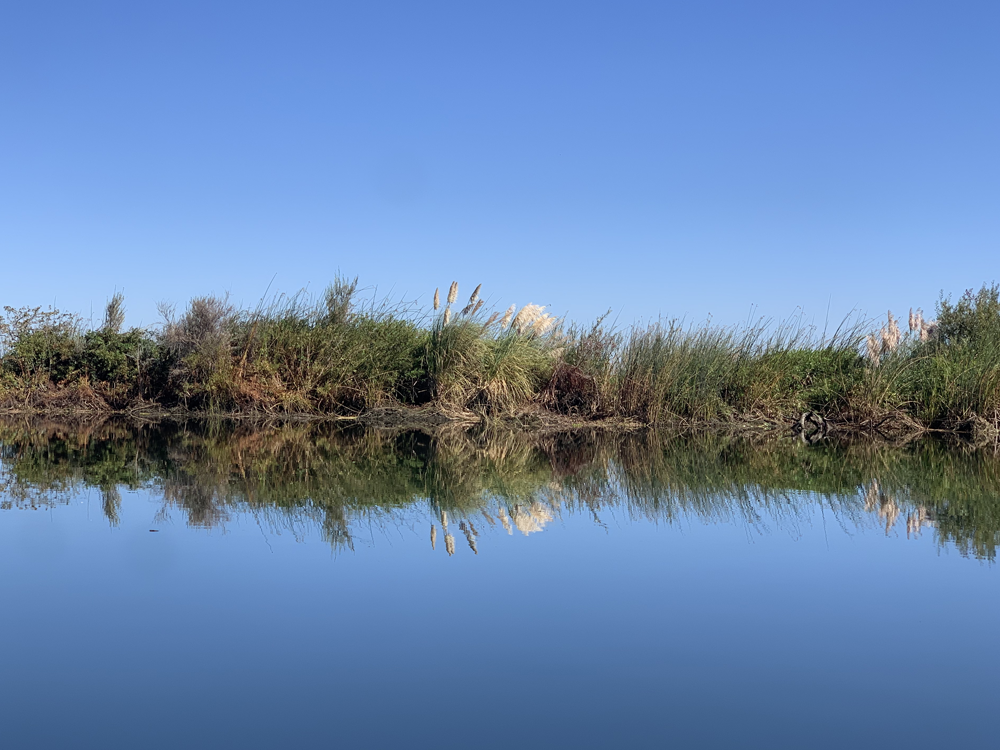
EcoStewards Lead Conservation Technician
Four hundred years ago, what is now called “Little Franks Tract”, along with the rest of the Sacramento-San Joaquin Delta, was a network of tidally influenced channels and wetlands. Historically, Bay Miwok people navigated through the channels in tule boats, relying on the life teeming from the highly productive wetlands. In 1902, Franks Tract, and the adjoining Little Franks Tract, were diked, drained, and converted into agricultural land. Finally, in 1982, Little Franks Tract’s levee was breached, and the 330-acre site has remained flooded to the present day.
The surrounding waters, now managed as Franks Tract State Recreation Area by CA State Parks, are popular to hunters and anglers. But the levee that traces the perimeter of the site has remained unmanaged. Without human interference, the levee slowly succumbed to highly invasive weeds, posing issues to Delta ecosystems and communities. Weeds like Himalayan blackberry form dense, thorny thickets that can cause soil erosion, impede wildlife, and increase fire risk. The tall plumes of Pampas grass produce hundreds of thousands of seeds that are dispersed miles in each direction, establishing new disruptive populations in neighboring areas. By displacing native vegetation, invasive weeds sever the intricate relationships between native plants and animals.
Through a partnership with CA State Parks, with funding from the Delta Conservancy, and support from partners, CCRCD is taking the first steps towards wrangling these hard-to-reach weeds, and imagining a different future for the once abandoned levee.
CCRCD has made some exciting developments in the project. We’ve analyzed drone imagery provided by Central UAS Technologies, mapping and identifying over five acres of non-native invasive weed species that have taken over the island. With the assistance of our maritime consultant, Clyde Terrell, we’ve learned to drive a boat, and constructed a floating dock, allowing our field crew to be the first to set foot on the levee in decades.
The next step in this exciting saga is to begin weed management trials, first tackling the vast thickets of Himalayan blackberry to improve access on the levee. Looking across the levee now, I can imagine its beautiful future: flycatchers flitting between sandbar willows, the gentle fragrance of California wild rose buzzing with bumblebees, and river otters scampering through the tules.
